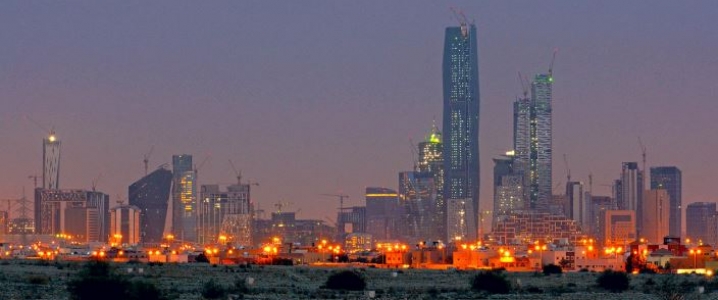By Nick Cunningham
Saudi Arabia is still clearly in control of the oil market.
The narrative that decisively took hold over the oil market in August was one of cracks in emerging market demand, concerns over the health of the global economy and fears over the fallout from the U.S.-China trade war. Turkey’s currency crisis set off a slide in emerging market currencies, which will likely undercut demand this year. The IMF warned earlier this summer that the downside risks to the economy were growing, a rather prescient prediction. On the supply side of the equation, outages from Iran loom large.
But when it comes to physical barrels on the market, Saudi Arabia is still in the driver’s seat. “While fears of trade wars will continue to influence sentiment and shape price outcomes, it is the recent shifts in OPEC, and particularly its dominant player Saudi Arabia’s, output policy which has had the biggest impact on physical balances, prices and the term structure to date,” The Oxford Institute for Energy Studies (OIES) wrote in a new report.
For the first few months of this year, Saudi Arabia maintained that the oil market was moving towards “rebalancing” with inventories in steady decline, but that there was more work to do. Saudi officials repeatedly stuck with the line that the OPEC+ agreement would not be altered before the end of the year and that they would continue to focus on bringing down inventories.
But the Trump administration’s withdrawal from the Iran nuclear deal and the return of sanctions raised fears of a huge disruption in Iranian supply. Suddenly, the market looked very tight. Coming just a few weeks before the June OPEC+ meeting, the U.S.’ policy change was decisive.
Oil prices rose sharply in April and May, and after a brief hiatus in early June over fears of a wave of fresh OPEC+ supply, prices rose to a high point at the end of the month. “The sharp rise in the oil price in April, the anxiety it created among key consuming countries, the change in the short-term supply outlook, Russia’s push to increase output, and US pressures on Saudi Arabia to act to put a cap on the oil price caused a revision in Saudi oil policy,” OIES wrote in its report.
Saudi officials stopped talking about the need to keep up with the supply curbs in order to rebalance the market and instead began sending signals market participants that Saudi Arabia would do “what is necessary” to fill any supply gap leftover from Iran, Venezuela and Libya.
The policy shift in Riyadh had a major impact on the market. Saudi Arabia ramped up production well before the OPEC+ meeting. In June, Saudi output jumped to 10.5 million barrels per day (mb/d), up 0.5 mb/d from a month earlier. Much of that increase came before Saudi Arabia knew what the outcome of the OPEC+ meeting would be. Some Gulf State allies, such as the UAE and Kuwait, plus Russia, added production in July.
“This increase in production from core GCC producers and Russia arrived at a time when the market
did not need additional supplies despite the rising concerns about outages,” OIES concluded. Iran supply had not yet declined and Libya restored some disrupted production. U.S. exports of light sweet crude also rose sharply in June. Interestingly, Saudi Arabia offered extra cargoes of extra light oil whereas Asian refiners were looking for heavier crude mixes. “The additional supplies overwhelmed the Atlantic basin, pushing Brent prices lower and flipping the term structure into contango,” OIES wrote.
The sudden rush of supply helps explain Saudi Arabia’s retreat in July. Saudi output fell from 10.44 mb/d in June to 10.387 mb/d in July, a decline of 52,000 bpd. More importantly, there were earlier press reports that suggested that Saudi Arabia’s initial plan was to continue to ramp up production to between 10.8 and 11.0 mb/d in July, which makes the decision to curb output all the more notable. “If Saudi Arabia were to have increased its output to 10.8 mb/d in July as indicated by various reports, the term structure would have weakened further and…prices would have fallen below $70/barrel.”
Some oil bulls thought that Saudi Arabia’s decision to cut output in July was a sign that it was aiming for higher prices, especially because the narrative about pending supply shortages was still making headlines. But OIES argues that rather than shooting for much higher prices, Saudi Arabia was merely defending the price floor by curbing production in July, recognizing that oil supply was much more robust than commonly thought.
The upshot is that as we sit here today, while demand fears have dragged Brent down into the low $70s and WTI into the mid-$60s, Saudi Arabia continues to exercise broad influence over the oil market. Saudi Arabia continues to calibrate its production levels so as to maintain price stability. More specifically, Riyadh seems to be aiming for a price range between $70 and $80 per barrel, OIES argues, and “its output policy will continue to be the major factor shaping price outcomes in the next few months.”
Saudi output will rise and fall depending on market developments. For all the talk about U.S. shale, Iran, the trade war, the currency crisis, or any other potential gamechanger, Saudi Arabia still exercises the most short-term control over oil prices.
Source: Oilprice.com









